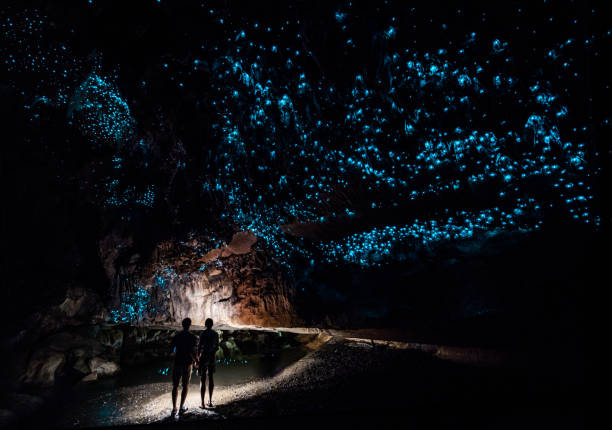The Blue Light Firefly is not actually a firefly, but a species of fungus gnat called the Arachnocampa luminosa. It is a blue light insect unique to Australia and New Zealand. They have no wings and cannot fly, but are soft, worm-like creatures with a tail that emits blue fluorescence. In the cave, they sparkle with tiny blue lights, creating a magical atmosphere.
Blue light insects usually grow in dark and humid underground caves. Every dark night, they twinkle with blue light, creating a unique scene that has been called the ninth wonder of the world.
What is the best time to see glow worms?
Best viewing period: Nights from October to December each year. However, they can be seen during the day or night in Brisbane and the Gold Coast.
Where you can see Glow Worms in Gold Coast?
Brisbane Tamborine Mountain man-made blue light cave
The Tamborine Mountain, which is only an hour’s drive from Brisbane, also has blue light fireflies to enjoy and is the only stalactite cave in Queensland that can be visited during the day.
The blue light cave is a man-made natural cave, with various shapes of stalactites and stalagmites that can be mistaken for the real thing, and the blue light insects live on these pillars.
Address: 104-144 Hartley Road, North Tamborine
Cost: AUD 12 for adults (approximately RMB 55), AUD 6 for children aged 5-12 (approximately RMB 27.5), and free for children under 4 years old.
Natural Bridge in Springbrook National Park on the Gold Coast
Springbrook National Park is part of the World Heritage “East Coast Rainforest Conservation Area,” and the park’s natural bridge is home to Australia’s largest colony of blue light fireflies.
The natural bridge was originally a natural cave, which collapsed after being eroded by river water all year round, forming a natural landscape similar to a bridge. Because it is always damp here, the rock formations like a bridge block external light, making it a suitable habitat for blue light insects.
Address: Springbrook National Park, Brisbane, Queensland
Cost: Free







